Everything you need to know about the Tesla Model 3 SR+
The Tesla Model 3 is the top selling electric car in Australia – and with good reason. It’s arguably the first EV that favourably compares on price with key rivals.
But there are plenty more EV rivals coming. Some of the most interesting are:
– Kia EV6
We’ll keep you up to date on those as they arrive in Australia in 2021 and 2022.
For now, though, it’s the Model 3 SR+ taking the EV glory. It’s appeal is broad ranging, tempting some out of prestige ICE cars and convincing others to step up from a mainstream brand to something that uses no fuel.
UPDATED: Tesla Model 3 updated for November 2021: longer range but slower 0-100km/h time
EXCLUSIVE TEST: China-made Model 3 Standard Range Plus versus USA-built Model 3 SR+. We test range, performance, efficiency, weight, charging time and more
FULL REVIEW: Tesla Model 3 Standard Range Plus
WANT TO DRIVE THE TESLA MODEL 3? Click here
But the Model 3 is also a very different beast to the petrol-powered cars many owners will be stepping out of. So here’s everything you need to know about the Tesla Model 3:
- Tesla has been steadily reducing the price of the Model 3 since 2020 to the point where it is now the cheapest it has ever been. But Tesla prices can fluctuate overnight without warning.
- Pricing for the Model 3 varies from state to state due to different registration and stamp duty charges. Like all EVs, there are potential discounts and incentives available depending on where you live in Australia.

- There’s no negotiating on prices with Teslas. You’re buying directly from head office, not a dealer, so the prices are fixed. That said, some leasing companies get a discount on the $1375 delivery charge and $150 “order fee”.
- White is the only standard colour in the Model 3. The other four colours cost extra; $1500 more for black, grey or blue and $2900 for red. You can also exchange the standard black seats for white for another $1500.
- If you want to use all the features built into the car you’ll need to subscribe to Tesla’s Premium Connectivity. As of mid-2021 it costs $9.99 per month ($119.88 annually) and gives access to live traffic data, satellite view for the navigation, internet browsing, music streaming, video streaming and access to Tesla’s take on karaoke, called Caraoke.
- Teslas warranty is less than that of most mainstream car makers, at four years and just 80,000km (it’s likely Australian Consumer Law would cover you beyond that with many faults or issues). The battery gets a separate eight-year, 160,000km warranty (Long Range and Performance models stretch the battery warranty to 192,000km).
- Tesla’s approach to almost everything in the car is very different to every other car in the market. It’s as significant as going from a PC to a Mac or from an old touch phone to a smartphone. Best to spend some time to get used to how everything works before taking off.
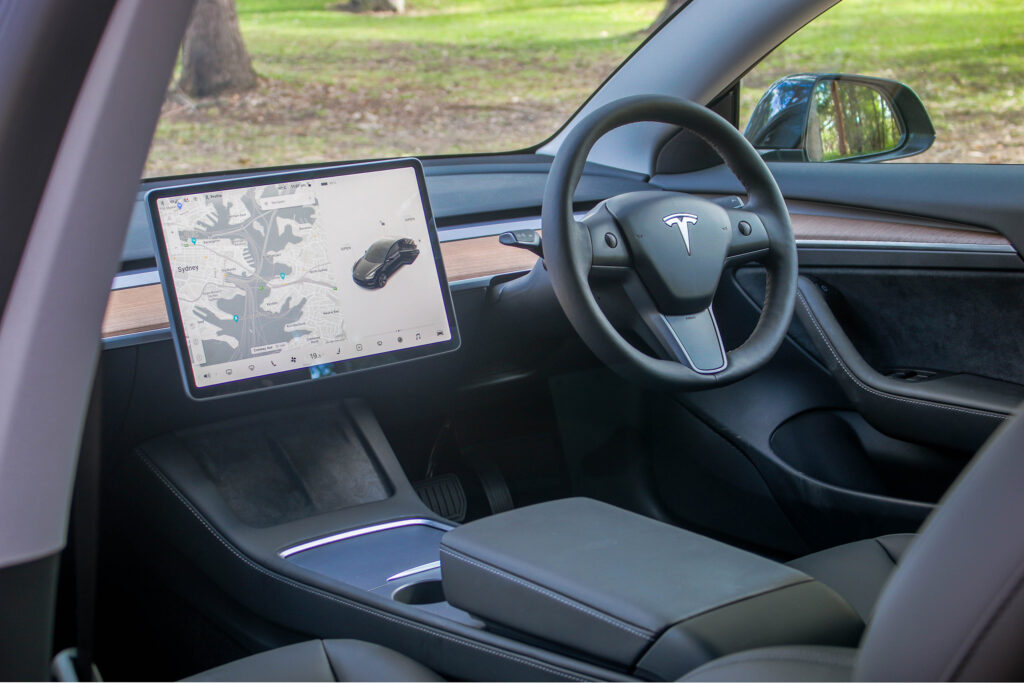
- The Standard Range Plus (or SR+) is the most affordable of three Model 3s Tesla offers in Australia. It’s also one of the most efficient EVs on the market, especially considering its performance. Electricity use often hovers between 13 and 15kWh per 100km, although it can rise to as high as 17/18kWh/100km.
- The centre infotainment screen is the nerve centre of the car controlling everything from the windscreen wipers and lights to the infotainment and navigation and even the adjustment of the exterior mirrors and the opening of the boot and glovebox. The screen is 15 inches in diameter.
- A Model 3 uses more electricity when the battery is “preconditioning” in anticipation of hooking up to a Supercharger. Preconditioning happens when you enter the location of a Supercharger into the onboard navigation.
- Like all Teslas, the Model 3 will incur an “idle fee” if you leave the car on a Supercharger once it’s fully charged. Tesla charges 50c per minute if more than half the Superchargers are in use or $1.00 per minute if all stations are currently in use. The fee doesn’t apply to slower destination chargers.

- The Model 3 imported from 2021 is produced in China. Prior to that all Model 3s came from California in the US. While the cars look identical from the outside, the Chinese-made models get a different battery chemistry that has lower energy density (it holds less electricity for the size of the battery). To compensate Tesla added more battery, which added weight.
- Tesla measures charging speed in kilometres per hour – how many kilometres of range you’re adding for each hour the car is plugged in to charge. When using a Supercharger you can achieve charging speeds around 1000km/h – albeit briefly. Like all EVs, it won’t hold that rate for the entire charge; the fastest charging occurs when the battery is below about 20 percent state of charge (SOC) and charging slows down noticeably above 80 percent SOC.
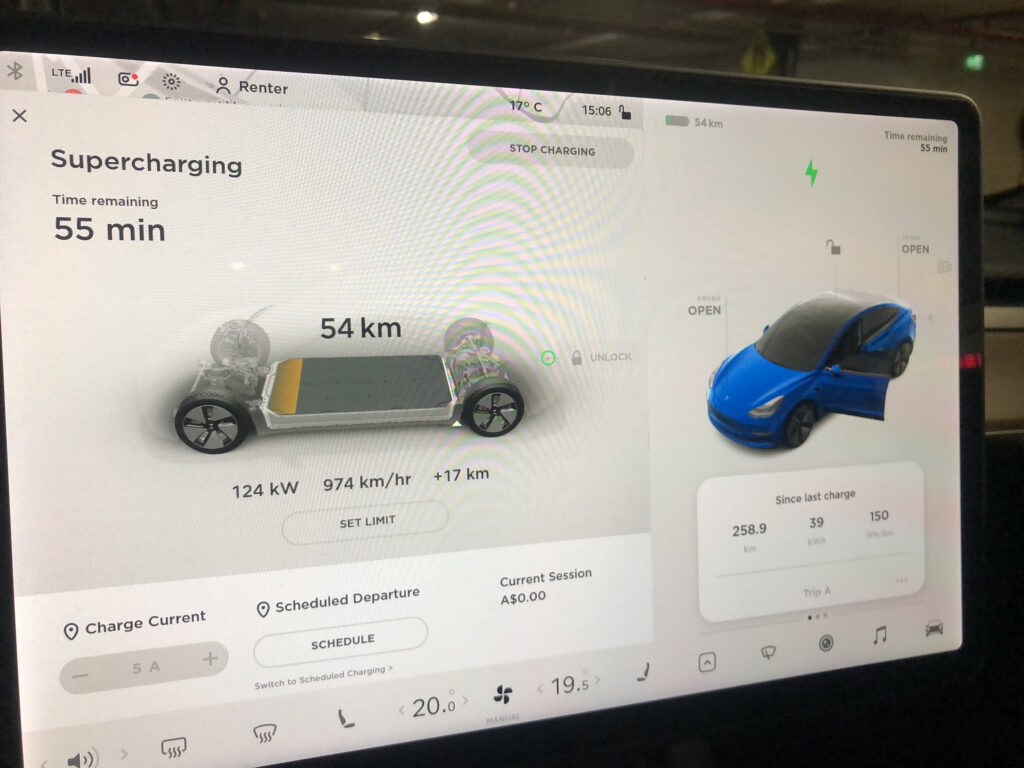
- Recharging at a Tesla Supercharger is the most expensive way to charge a Model 3 and these days varies depending on where you’re charging. Electricity is typically charged at around 45-50c/kWh, which is well up on the 25-30c/kWh many people pay for electricity at home. Even ultra-rapid chargers on the Chargefox network are cheaper than Tesla’s own Superchargers.
- The Model 3 will often charge faster at a Tesla Supercharger than it will at another fast charging outlet. That’s because the car can precondition its battery (heat or cool it) when it knows it’s heading to a Supercharger. There’s no way to precondition the battery manually. So, depending on the outside temperature, the car will often accept more electricity if the battery temperature has been optimised through preconditioning.
- Like all EVs the Model 3’s fastest charging happens when the battery is almost empty. At less than 15 percent state of charge is when you’re likely to see the highest charging rate (the most power going into the battery). Beyond that the car’s software begins regulating the power to protect the battery.
- The sound system is unbranded. Tesla didn’t want to pay the licensing rights for a Bose, Harman Kardon or Bang & Olufsen or another big brand sound system. So, the company instead hired audio specialists – some of whom worked for some of the big players – to develop its own audio in-house.
- Not all the things that look like speakers in a Standard Range Plus produce sound. To simplify manufacturing, Tesla puts the same holes and in some cases the same speakers in the base model as it does for the premium audio system, but it just doesn’t activate those speakers unless you pay for the upgrade. In case you’re wondering, in an SR+ the things that look like speakers at the top of each windscreen pillar and on the rear parcel shelf produce no sound.
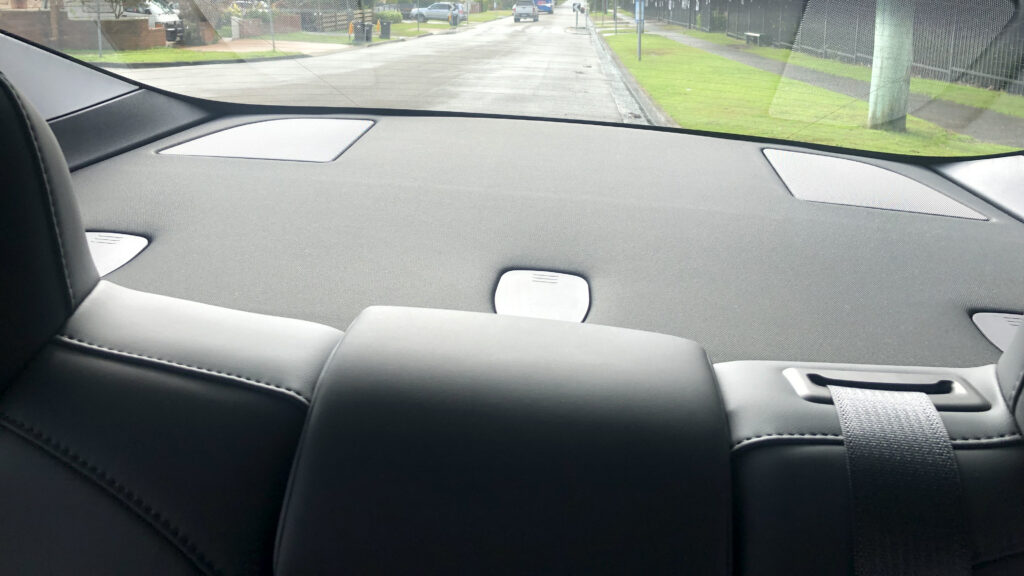
- The Model 3 has eight cameras: Three at the top of the windscreen facing forward, one in each central pillar (between the front and rear doors) looking forward, one in each indicator repeater just behind the front wheels looking backwards, and one mounted on the boot.
WANT TO DRIVE THE TESLA MODEL 3? Click here
- Four of those eight cameras record what’s happening around the car both on the road or when parked using the Sentry mode. Footage can then be downloaded via the USB in the glovebox.
- Sentry mode can drain the battery very quickly. The constant monitoring and data capture can sap 5 percent or more battery charge overnight. Even without Sentry mode activated a Model 3 can lose about 1 percent battery charge per day when parked.
- The charge port is cleverly hidden in the rear tail light cluster on the passenger side. It can be opened by physically tapping the flap, through the smartphone app or (you guessed it) via the main touchscreen.
- A green Tesla logo near the charging port flashes when the car is charging.
- Those great looking 18-inch alloy wheels aren’t alloys, at least not the bits you’re looking at. There are plastic wheel covers over alloy wheels, chosen for their aerodynamics to extend the range.
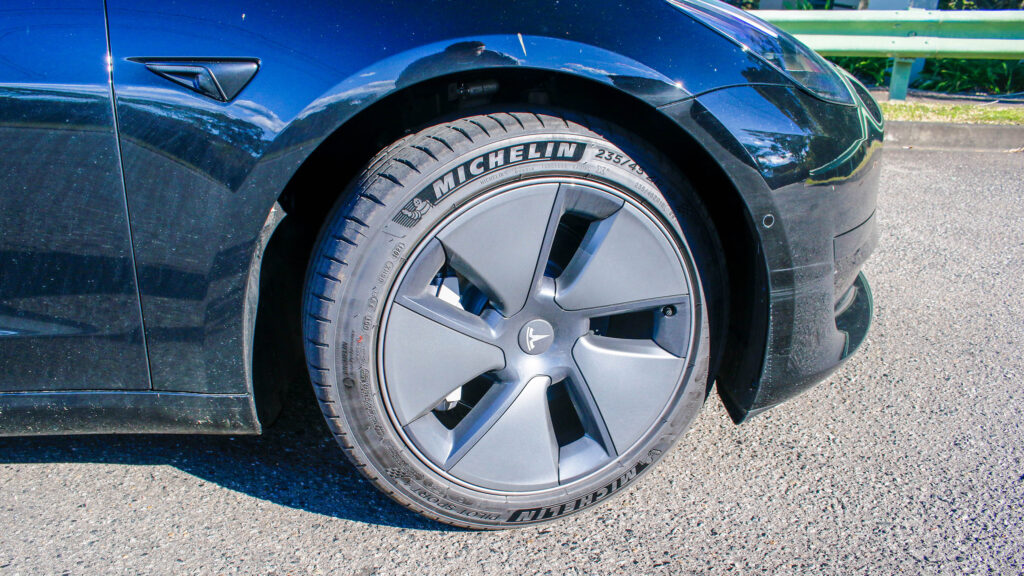
- Tesla claims 448km of EV range, which is based on the WLTP test. The real world range is closer to 400km. Like all EVs, expect the range to drop further if you’re driving at higher speeds; EVs typically have a shorter range on the freeway compared with the suburbs.
- You won’t see any air vents from the driver’s seat. They’re hidden in the slit that runs across the dash. You adjust the air flow by pinching and zooming within the screen.
- Unlike most EVs on the market, Tesla doesn’t tell owners the capacity of the battery pack, instead reverting to the range. That could be because the new Chinese-made models have a bigger battery pack than the American-sourced Model 3s that were sold in Australia in 2019 and 2020. Best estimates are the new SR+ has about 55kWh of battery capacity.
- The Model 3 has a modest 425-litre boot as well as a 60/40 split-fold for loading larger items. There’s also a 117L frunk (or front trunk) under the bonnet. It’s never going to take a suitcase but is handy for small soft bags or valuables. Some owners also use it to store the charging cables.
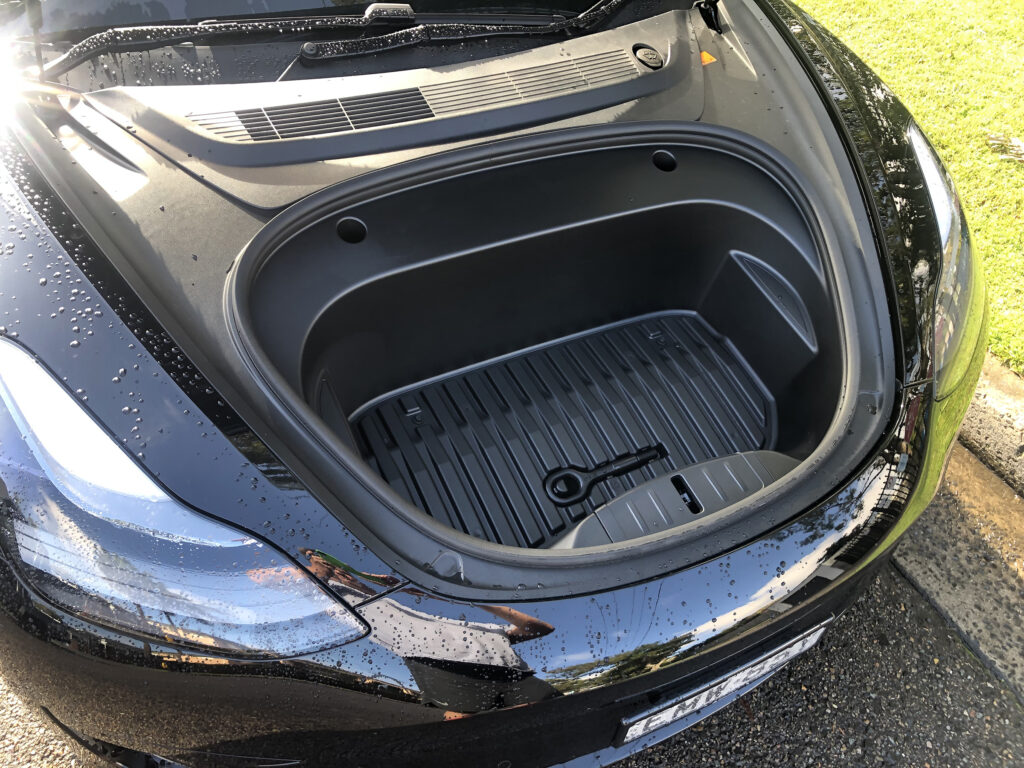
- The Model 3 is supplied with Tesla’s standard “Mobile Connector”, which includes a six-metre cable and two plug adapters. One allows the car to be charged from a standard powerpoint, which would take about 25 hours for a full charge. The other has the longer earth pin for a 15A powerpoint (which are rare in residential houses), lowering the charge time to about 16 hours.
- The Model 3 looks a bit like a hatchback but it’s a sedan with a regular boot. The boot is power operated and can be opened by a button on the boot or the Tesla app or through (you guessed it) the central display screen.
- There’s no start button in a Tesla. Make your phone the key, put your bum on the seat and press the brake pedal and the car will come to life, ready for you to select Drive.
- The Model 3 SR+ is rear-wheel drive. A single electric motor powers the rear wheels. Other Model 3s (Long Range and Performance) add a motor under the bonnet for all-wheel drive.
- Tesla doesn’t detail power and torque figures for the Model 3, instead focusing on performance (the claimed 0-100km/h time is 5.6 seconds, although independent testing shows the real figure is closer to 6.0 seconds). But in certifying the car for sale in Australia, Tesla informed the Australian Government the Standard Range Plus makes 239kW.
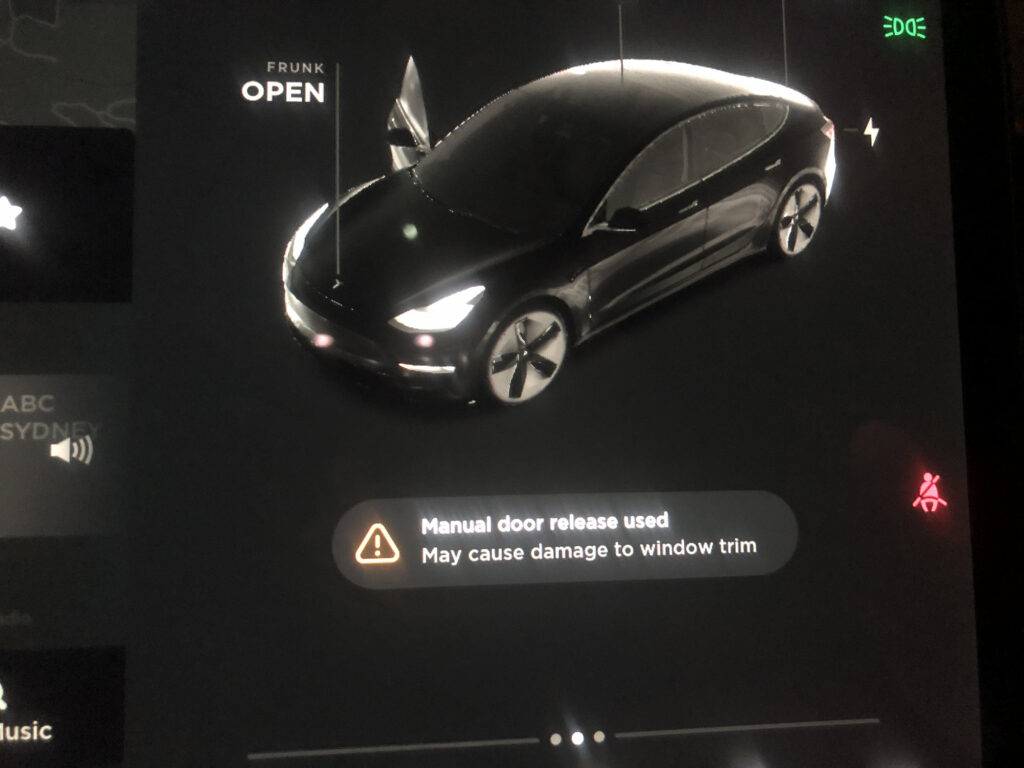
- The Model 3 has mechanical door handles but Tesla recommends you don’t use them because it “may cause damage to window trim”.
- The key is an option for a Tesla Model 3. Otherwise you get a credit card-sized card that has to be held near specific parts of the car to open the door or start the car.
- The speedo doesn’t display when the car is in Park. It only pops up in the top right corner of the 15-inch touchscreen once you select D or R.
- There are 18 games embedded in the Model 3’s central screen. They include traditional options such as chess and backgammon as well as old style arcade games such as Centipede and Asteroids. Most games can’t be played while driving but The Battle of Polytopia and Solitare can each be played on the run, provided you agree to a disclaimer saying you are the passenger, not the driver.
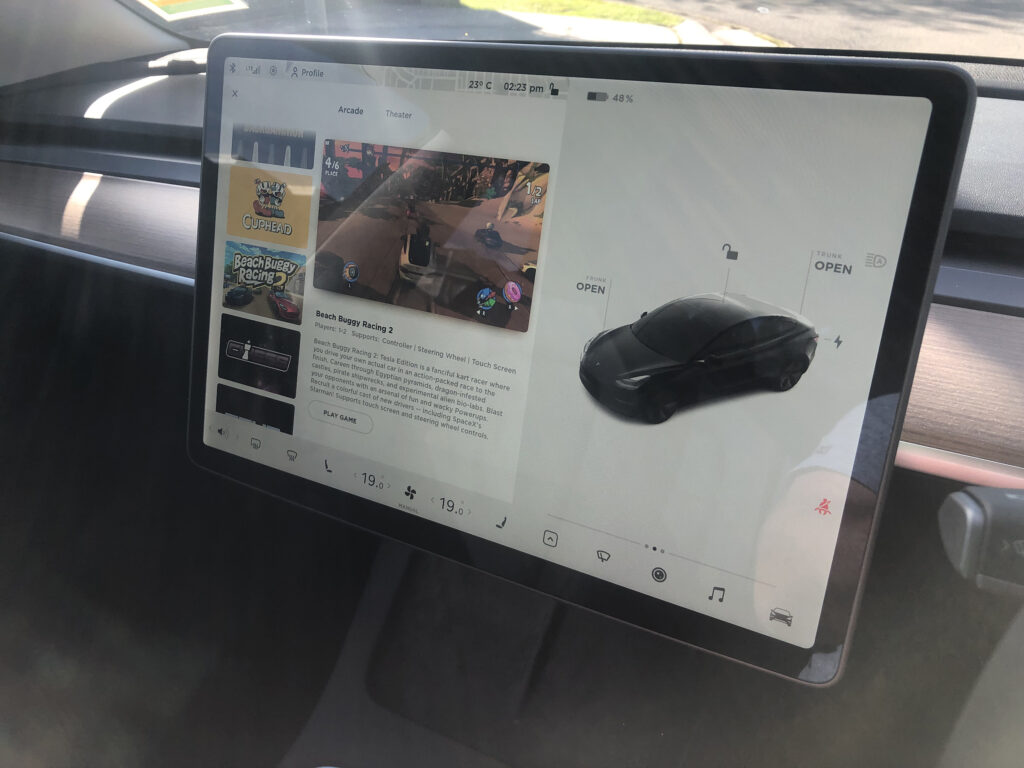
- The stuff that looks like leather isn’t. It’s a fake leather-look material.
- The Model 3 is claimed to be vegan. Even the glues and adhesives – which on other cars often contain animal products – are free of animal products.
- The mirrors can be set to dip when you select Reverse so you can monitor the gutter to avoid damaging the wheels or tyres. However, you have to dip both mirrors at once or neither.
- All Model 3s get a glass panoramic sunroof, which makes the cabin feel airier. However there is no cover for the sunroof, only tinting. On a hot day and in direct sunlight things can get steamy.
- The sunvisors are locked in place by magnets rather than clips. Another example of Tesla thinking differently.
- The indicators can be set to whoopee cushion sounds. You’ll hear a squelchy and squeamish selection of bodily expulsions when you activate the indicators.
- The boot is power operated, allowing it to be opened and closed via the touchscreen or remotely via an app.
- There’s no latch for the glovebox. It’s opened via a virtual button in the centre screen.
- Driver profiles can be set in the main screen, allowing the seat, mirror and steering wheel positions to be saved by name.

- There is no AM radio, only FM and digital radio (DAB). That’s in line with many EVs, which don’t bother with AM due to the challenges in shielding the aerial from electrical interference.
- Selecting Drive or Reverse is done via the stalk on the right of the steering wheel.
- That gear selector stalk is also used to activate the cruise control (by tapping down into D once) and Autopilot (by tapping down into D twice).
- Autopilot will only engage if the car has good visibility of lane markings and is not turning a corner. Even then, you need to be keeping a close eye on what it’s doing because it’s a long way from perfect, especially when you’re away from a freeway.
- Despite the clever marketing, Autopilot is no more than a level 2 driver assistance system as used on myriad new cars. It can auto brake and steer but the driver is still wholly in control.
- Autopilot works well on freeways with good lane markings and gentle corner radii. In other conditions (from suburban roads to country roads) it ranges from hopeless to average in the way it deals with other traffic and road markings.
- Spotify and TuneIn radio are embedded in the car, allowing music steaming whenever the car is in range – at least if you subscribe to the $9.99/month Premium Connectivity.
- The Model 3 has a high-voltage (400V) power system to drive the car as well as a regular 12V battery for other electrical systems in the car, from the wipers and touchscreen to opening the glovebox.
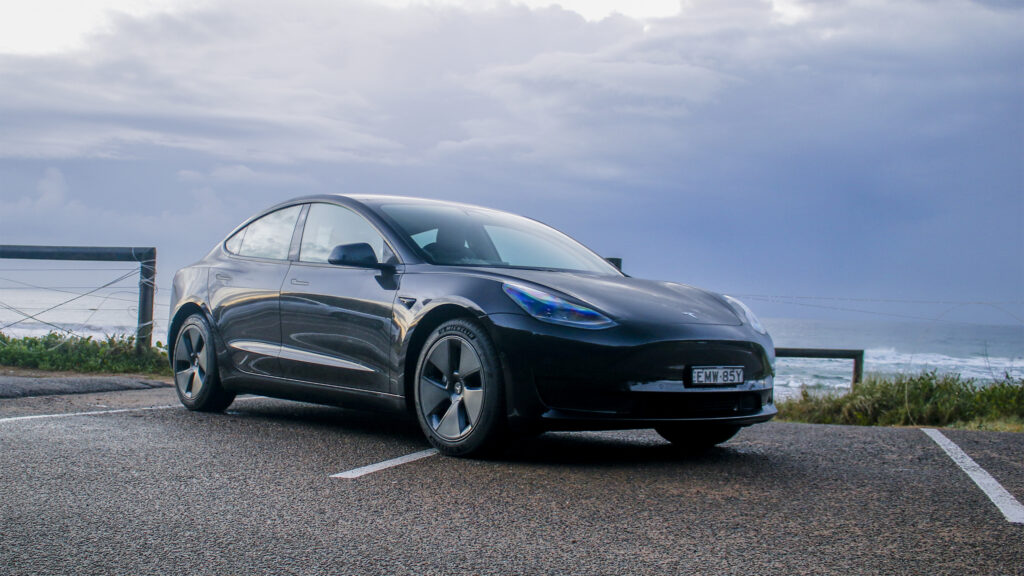
- Like all EVs the Model 3 has a 12V battery to power ancillaries such as the centre screen, seats and heaters had the ventilation. The 12V battery is under the bonnet just forward of the windscreen.
- If the 12V battery runs flat the Model 3 can be jump started by another car. However, Tesla says it cannot be used jump start other cars as it could “result in damage”.
- If the 12V battery is so flat that the touchscreen isn’t working to allow you to open the bonnet (to access the flat battery) there is a set of wires accessible through one of the towing eyes in the front bumper. Pull out the plastic cover and a red (positive) and black (negative) cable allow the car to be connected to a 12V charger or another vehicle.
- The Tesla Model 3 cannot tow. Oddly, Tesla has certified it to tow up to 1000kg but the owner’s manual clearly states the car is not designed to tow.
- Tesla says not to bother draining the battery before charging it. Tesla says “the battery performs best when charged regularly”.
- Despite all the tech and trinkets, Tesla does not have Apple CarPlay and Android Auto, the connectivity systems now commonplace in most new cars. Tesla believes its connectivity is a better bet.

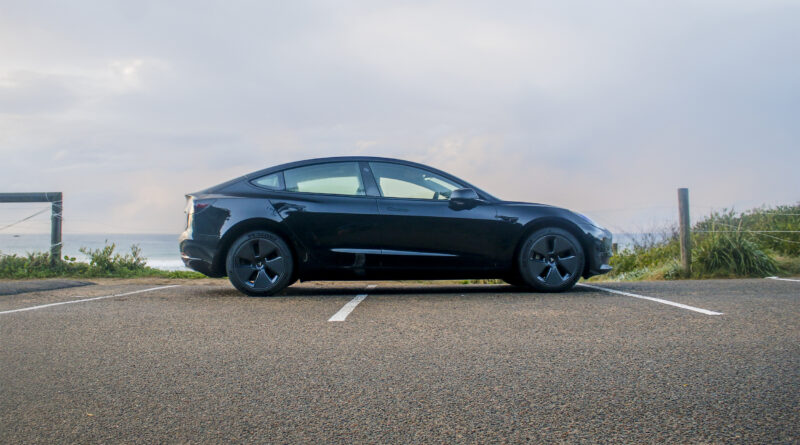
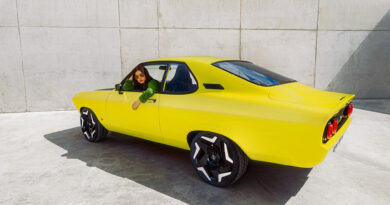
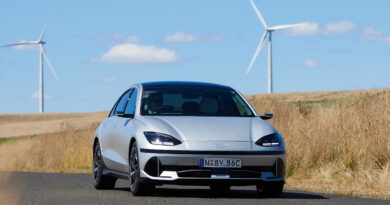
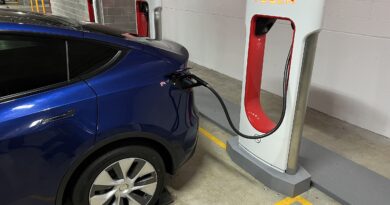
Why does virtually no one talk about the very good (but not perfect) voice control for most vehicle functions?